- Home
- Michael Veitch
Turning Point Page 11
Turning Point Read online
Page 11
The men on the boat may have been surprised, but the base was not, even having time to ready its anti-aircraft guns and scramble all available Kittyhawks into the air. A short time earlier, the signal of three .303 rifle shots fired in quick succession had rung out across Gurney Field, sending the pilots racing to their aircraft amid a ricocheting chorus of ‘It’s on!’ All remaining personnel headed for shelter, but the squadron fire crew stationed themselves at the western end of the runway to tend to any aircraft which crashed during take-off. As the runway itself was usually the target, the fire crews at Milne Bay were always in the thick of the action.
With the Japanese outnumbered by more than two to one, it should have been a one-sided contest, but the inexperienced Australian pilots were in for a shock.
Some of the American personnel were also surprised. The men of No. 8 Fighter Control Unit had sat through a couple of false alarms already that morning, and now failed to take this latest alert seriously. Their midday meal seemed more of a priority, and many were lining up with their dixie tins in front of the ‘chow tent’ when the Zeros thundered overhead, barely seeming to clear the coconut trees. An Australian signaller who was dining with the Americans that morning later recalled the chaos:
We had a Red Alert from very early in the morning and it remained a Red for a number of hours. However, nothing eventuated and we decided to go and have lunch. No sooner had we sat down when all hell broke loose, cannon shells were bursting all around the area as we were being busily strafed.
The men waiting in line ducked at the roar of aircraft engines, then scattered, making for the nearest slit trenches, but as they had been somewhat lax with their shovels in carrying out this particular chore, these proved hard to find. Possibly this was because as soon as the trenches were dug, they became waterlogged breeding pools for mosquitoes. After this attack, shovels and entrenching tools were used with renewed vigour.
With radio silence now lifted, the Kittyhawk pilots circling above the cloud mass were alerted to the attack, and swooped down. What followed was several crazed minutes of one of the lowest-level aerial dogfights ever fought, in which the Australian pilots were completely outflown. With the cloud base beginning at a perilously low 1000 feet, the restricted layer of clear air in which the engagement could be fought handed the Japanese the advantage. At this height, the Australians’ tactic of descending and firing from above, then zooming away in a dive, was completely neutralised.
The Japanese swung around on their wingtips and strafed Gurney Field, but they had been given strict orders to avoid causing excessive damage to the runway. As the Kittyhawks had already taken off, though, there were hardly any other targets available. The anti-aircraft guns on the ground opened up furiously, with every available man racing to a gun pit and feeding ammunition to the crew. Some even pointed their rifles aloft and took pot shots, even though the chance of hitting anything was virtually nil. A few pilots on the ground crouched behind a tree and were letting fire with their Webley service revolvers, oblivious to the fact that they were ineffective at little more than 50 yards.
The CO of 76 Squadron, Peter Turnbull, raced to the nearest anti-aircraft gun position and assisted the gunners with aircraft recognition, guiding them away from the Kittyhawks and towards the less-familiar Zeros. Anti-aircraft shells were flying as the aircraft were dogfighting, the gun barrels traversing wildly back and forth to track the low trajectory of enemy fighters as they roared deafeningly close overhead.
Emerging below the cloud base, the Kittyhawks had to immediately pull up to avoid hitting the ground, at which point the Zeros used their superior manoeuvrability to pull up almost vertically and disappear into the cloud. The Australian pilots craned their necks upwards to see where they had gone, before realising that the Japanese fighters, having executed a perfect loop, were now directly behind them with guns blazing. It was a chaotic melee as the Zeros continually disengaged and reappeared on the tail of another Australian.
Flying Officer Michael Butler, a 75 Squadron veteran of the Port Moresby campaign, long remembered the skill of the Japanese pilots:
After the war we all read that the squadron of Japs flying against us were all highly experienced … their judgement was absolutely superb, because as soon as you were getting almost in range they’d commence a stall turn and go up vertically, and they’d leave it so late that you couldn’t pull back to fire at them otherwise you’d go into a high-speed stall, and the next thing they’re on your tail.
Instead of jumping the Zeros, the Kittyhawk pilots found that they were now the ones outfoxed. The men who had flown Spitfires over many months of combat in Europe suddenly realised that their experience counted for little above the jungle. Flight Lieutenant Bardie Wawn had never witnessed such a confusing and frustrating encounter. Five times he attempted to line up on a red-circled fighter, but five times it evaded his gunsight. Again and again he was forced to break off an attack to come to the aid of another Kittyhawk being pursued by a Zero. Sadly, he could not protect everyone, particularly his wingman that day, Albert McLeod.
Twenty-four-year-old Flying Officer McLeod was originally from Auckland, but had come to Sydney as a child and worked as a commercial traveller before the war. In May 1941 he walked into an RAAF recruiting office in Burwood to become a pilot. This day over Milne Bay was his first ever engagement. He had been paired with the experienced Wawn, but with no combat experience, and in this claustrophobic sandwich of air between the airstrip and the clouds, he was a sitting duck. In the melee Wawn and McLeod quickly became separated.
On the ground, a crewman, Leading Aircraftsman Alex Farthing, watched as he flashed by overhead. ‘He came back over the drome with about five Zeros on his hammer,’ Farthing later said. ‘He disappeared into the hills – never to be seen again.’
Not until 1967 was the wreckage of Albert McLeod’s Kittyhawk A29-93 discovered in dense jungle in the hills above Milne Bay. Part of the fuselage was brought back to Australia and put on display at the birthplace of the RAAF, Point Cook, in Victoria. Surprisingly, however, not one but two sets of wheels were found in McLeod’s wreckage, indicating that he may have collided with, or was crashed into by, a Zero. It’s therefore possible he took one of his enemy with him to the grave. ‘It was the first time I had ever lost a wingman,’ said Bardie years later, ‘a terrible feeling.’
Flying Officer Mark Sheldon, a former building contractor from Sydney, and at age 28 decidedly ancient by fighter pilot standards, also lost his life on this day. Sheldon had flown Spitfires alongside Keith Truscott as a sergeant pilot with 452 Squadron in England, then had the rare experience of travelling to Russia, operating Hurricanes with the RAF’s 132 Squadron near Leningrad.
Returning to Australia, Sheldon was awarded a commission, and arrived with the squadron on 21 July. On 11 August he was already in the air, flying a standing patrol, when the Japanese arrived. No-one is certain of his fate, only that he crashed into the mountains above the village of Ahioma – witnessed by local villagers gathering pawpaws. Using their machetes, they cut a climbing path through the mountain jungle to reach the wreck and retrieve Sheldon’s body, which they buried in a clearing close to their village. A runner was sent along the coastal track to inform the Australians at Gili Gili, and eleven days later a party of four was sent to investigate. One of these was 75 Squadron’s doctor, Bill Deane-Butcher, who wrote of the incident in his book, Fighter Squadron Doctor:
Our climb to find the wrecked plane was a source of great entertainment for our hosts. The heat was oppressive, our cumbersome boots kept sliding back and our wrists were exhausted from grappling with vines and branches to haul ourselves up the steep muddy trail. We were no match for our agile companions.
Unable to contemplate the indignity of disturbing Sheldon’s grave, which the local population had decorated with a ring of shells and hibiscus blooms, Deane-Butcher instead fashioned a timber cross with Sheldon’s name and particulars, and left him in peace. Much later, Sheldon’
s remains were officially exhumed and reinterred in the Commonwealth War Cemetery at Bomana, near Port Moresby.
Sergeant George Inkster, a quiet young man who had worked in a Sydney theatre before the war, joined the RAAF after being inspired by the stories of the men who flew in the Battle of Britain. With 64 Squadron, he would meet some of those same men, and take part in fighter sweeps in Spitfires over Europe.
In the operations tent at the end of Gurney Field runway, Bill Deane-Butcher heard the distressed radio calls of a pilot being chased by several Zeros as he approached for a very fast landing, his aircraft already on fire. A few seconds later, George Inkster’s Kittyhawk came into view above the strip, belching thick black smoke and with several enemy aircraft on its tail, the rattle of machine-gun fire clearly audible above the din of the engines.
Deane-Butcher immediately jumped into the ambulance and, with his orderly, raced down the side of the long runway to where he presumed Inkster’s aircraft would land, joined also by the fire tender. Over the ambulance radio, Inkster’s voice could be heard becoming more panicked as the fire intensified. Deane-Butcher, who as a young doctor before the war had witnessed the terrible suffering of burns patients, was well aware that the pilots flew in shorts and short sleeves that offered no protection from a cockpit fire.
‘Suddenly,’ Deane-Butcher later wrote, ‘the aircraft changed posture and with nose up, climbed steeply to gain height.’ Unable to bear the agony of the burning cockpit, Inkster aborted the landing at the last second and decided to bail out, pulling the stick back to gain sufficient height.
Tragically, he was too late. Just above Deane-Butcher’s head, the aircraft stalled in an almost vertical position, and Inkster was seen to leap from the smoking cockpit as the plane keeled over and crashed into the coconut trees. Inkster pulled his parachute cord, and the canopy began to unfurl as he plummeted towards the ground, but to the horror of the handful of onlookers he struck the runway just 20 yards from where Deane-Butcher was standing. Rushing to the crumpled heap, the doctor found that the young pilot was dead.
Flight Lieutenant Bardie Wawn, also in the air, witnessed the incident. ‘I was actually diving on the Zero behind George that was attacking him. All of a sudden, his aircraft burst into flames at about 500 feet. His aircraft went into a slow roll and I saw George jump out. But he was too low. His parachute opened just as he hit the ground.’
One of Inkster’s ground crew, Aircraftsman Bob Clark, who likewise witnessed the tragic incident, later expounded another theory:
At the time, RAAF fighter aircraft were scarce and … the aircrew had been ordered to save them if possible. When George was hit and his aircraft started to flame, it is surmised that he felt he could land and have the fire put out – thereby saving the craft. Apparently on approach to the Strip, the fire became more intense and he took it up and bailed out. Another 50 feet would have given him a soft landing. But it was not to be.
George Inkster was buried the next day on a hill overlooking Gurney Field. He was remembered by all as a ‘very quiet, unassuming sort of bloke’ who largely avoided the horseplay typical of the pilots, preferring to spend time talking to the ground crew. On guard duty one night, Bob Clark had an opportunity to look through George’s logbook, and was amazed to realise that this quiet young pilot in fact had a full tour of eventful combat flying under his belt.
The fourth casualty on this sobering day for the RAAF was 23-year-old Warrant Officer Frank Shelley, a bank officer from Double Bay, in Sydney, and another who had flown with 452 Squadron in England. Of the circumstances of his demise, however, nothing is known. His aircraft was briefly sighted leaving the combat area, never to be seen again.
The Japanese did not escape the engagement unscathed, with pilots of the combined RAAF squadrons reporting three Zeros probably destroyed, one possibly destroyed, and further hits on several others. The Japanese claimed a highly exaggerated nine Australian aircraft destroyed; such embellishments were typical of Japanese air victory claims in this period of the war.
The next day, the first of the ships carrying the 18th Infantry Brigade pulled up to the jetty at Gili Gili and began to unload. Three days later, on 15 August, the Japanese issued their orders for the invasion of Milne Bay.
CHAPTER 15
FIRST BLOOD AT
GOODENOUGH ISLAND
Towards dusk on the particularly wet and gloomy afternoon of 20 August, virtually everyone toiling at No. 1 Strip, recently renamed Gurney Field, stopped what they were doing to look up and watch the big green American Liberator bomber, which had been circling now for the best part of an hour. Lower and lower the aircraft had come, forced down by the ever-decreasing cloud ceiling which now hung above the airstrip at just 400 feet. For the past 90 minutes, the Liberator’s pilot, Captain Fred Eaton Jnr from New York, and his Australian co-pilot, Flight Sergeant Marv Bell, had, with their engineer and crew, tried everything they could think of to fix the stricken hydraulic system which had left them with just one functioning wheel out of the three they needed to land safely.
The nosewheel – down but not locked – would, they knew, collapse as soon as it touched the runway, leaving just the port wheel locked and in place, with the starboard wheel not having lowered at all. Even worse, their two wheels now stubbornly refused to retract to allow Eaton to chance a pure belly landing, by far the safest option in the circumstances.
Liberator AL-515 had not been a lucky ‘ship’ for Captain Eaton. Only a few days before, when bringing a load of ammunition and a Bofors gun up to Milne Bay from their base at Townsville, an electrical fire had erupted at the base of one of the gun turrets, which was only just put out by the quick-thinking crew. He prayed he had just a little more luck in store.
All eyes watched the forlorn bomber as it circled the strip. Frantically, the crew threw out the crates of 2000 pounds worth of Bofors anti-aircraft ammunition they carried, and assumed their crash positions as Eaton came in for a long, low approach in the filthy weather. Everyone at Gurney now lined the runway and held their breath as the fire tenders stood at the ready.
Standing on the runway apron, Corporal Vic Alexander from 76 Squadron was one of the witnesses. ‘The single wheel made contact with a plume of blue smoke, bounced and touched again. Then the starboard wing-tip slowly dropped and contacted the metal strip with a long shower of sparks.’
The rain was something of a blessing this day, supressing some of the sparks that could otherwise have turned the aircraft into an inferno. Working the brakes expertly, Eaton managed to keep her straight on the runway till the Liberator’s nose wheel collapsed and the starboard props lowered with a horrible sound onto the metal runway.
Then, the great bulk of the plane pivoted in a perfect 180-degree ground loop and came to a stop, facing the way she had landed. Eaton immediately shut off the electrics and a huge cheer went up from inside, and outside, the aircraft. Six valuable airmen then made ‘a hasty and undignified exit as they scrambled clear’, to fly and fight another day.
RAAF engineers and mechanics fell on the aircraft over the next day, dragging it off the runway then stripping it bare of every useable gun and fitting, particularly the specialised American half-inch exploding ammunition, not being used by Australian aircraft at the time. Sergeant Bert Hill from 76 Squadron remembered, ‘The explosive rounds delighted our pilots when we interspersed them in the ammo belts. They later expended them on Japanese stores and barges in their strafing attacks … like little kids with new toys on Christmas morning.’
Captain Eaton and his crew were honoured guests of the RAAF for the next few days until a flight could be found to take them back to Townsville. At one stage, Les Jackson, 75 Squadron CO, made a small wager with Captain Eaton: ‘I bet that plane of yours gets strafed by the Japs.’
Two days later on 24 August, Les would collect his money when fifteen Zeros appeared over the airstrip in the early morning light, looking for targets. With most of the Kittyhawks either in the air or well protected i
n the revetments, the Japanese pilots were again frustrated, choosing instead to expend their energies – as well as their ammunition – destroying the already cannibalised Liberator parked on the runway’s edge. After three or four passes, the Zeros set it ablaze, igniting what fuel remained in the aircraft’s wing tanks, but as it was never to have flown again anyway, their efforts were wasted.
It was on this occasion that one of 76 Squadron’s most experienced pilots, Bardie Wawn, came close to falling victim to the Japanese. At dawn that morning, Wawn was assigned to lead the first patrol, but on this occasion his usually reliable Kittyhawk refused to start. Waving the other five aircraft on, he allowed his mechanic to toil with his engine, eventually producing the cough of blue smoke and sudden roar denoting the Allison engine was back in business and ready to go. Taking off alone, Bardie headed to their designated patrolling area, the far end of the bay, when he noticed two of his Kittyhawks heading back towards him a couple of thousand feet above, obviously checking on the whereabouts of their flight commander.
Bardie was pleased, thinking, ‘Good. At least a couple of those blokes have the sense to come back and form up behind me.’ Waggling his wings in recognition, he noticed one of the Kittyhawks do the same, and so executed a gentle turn to allow them to get behind him so that he would take over the lead. ‘Trouble was,’ reflected Bardie years later, ‘they weren’t Kittyhawks at all, they were Zeros!’ Too late Bardie noticed the rising sun emblem and two radial engines flash past, then turn into the ideal attack position he had conveniently permitted them to assume. The Japanese pilots undoubtedly could not believe their luck.

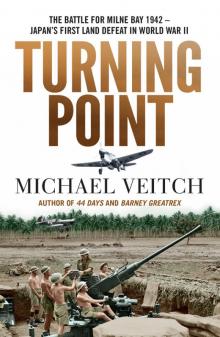 Turning Point
Turning Point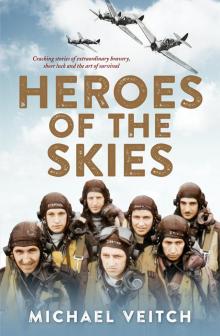 Heroes of the Skies
Heroes of the Skies The Forgotten Islands
The Forgotten Islands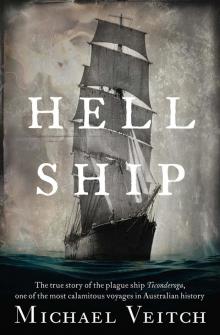 Hell Ship
Hell Ship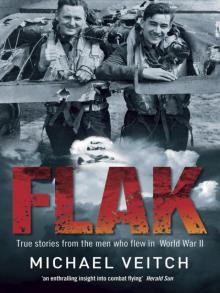 Flak
Flak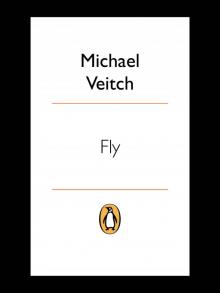 Fly
Fly